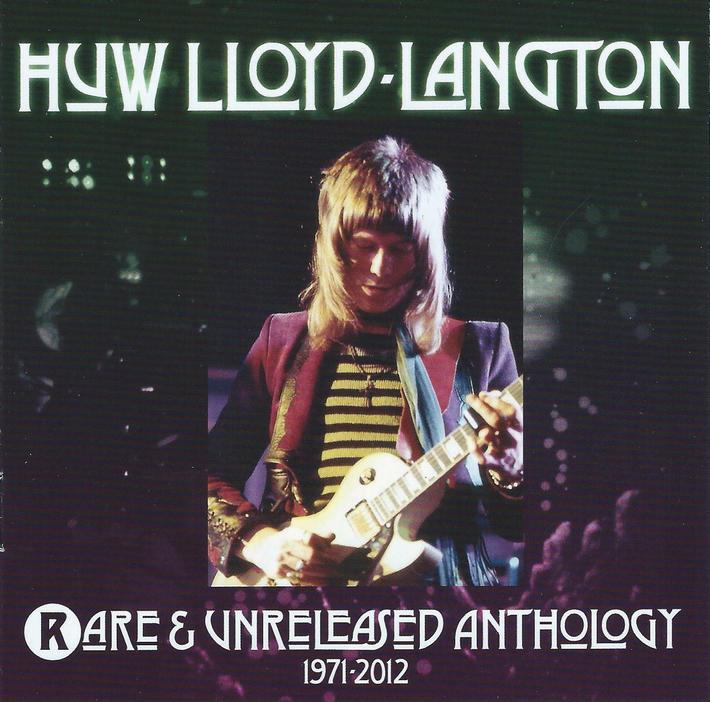 I did not know Huw personally, but from what I have heard from people who did know him, he was a great guy, a generous man, both to those he knew and to his fans. Sadly, he was taken from us late in 2012, but he has left a great legacy of music behind which includes this fine compilation.
I did not know Huw personally, but from what I have heard from people who did know him, he was a great guy, a generous man, both to those he knew and to his fans. Sadly, he was taken from us late in 2012, but he has left a great legacy of music behind which includes this fine compilation.
Most readers here will know Huw as one of the founding members of Hawkwind, and as one of its guiding lights throughout the 80’s. A first-rate guitarist, Huw was also a great songwriter, contributing memorable songs to the Hawkwind canon such as Rocky Paths, Waiting for Tomorrow, The Sea King and Moonglum, as well as co-writing many other songs from the band’s 80’s era. Huw also liked instrumentals, and contributed tracks like the frenetic Space Chase and the haunting Tides to Hawkwind’s albums.
But Huw also had a solo career, releasing nine albums with the Lloyd-Langton Group, two albums with hard rock band Widowmaker, as well as other contributions and collaborations. Huw’s versatility as a musician is only outdone by the sheer emotional intensity he pours into his playing, and both those aspects can be heard on this interesting and eclectic collection. Disc 1 starts with 11 solo acoustic songs written by him and his wife Marion, and recorded in 1971, the year after he left the founding line-up of Hawkwind. Reading Dave Thompson’s liner notes inside the CD case, you learn the story of Huw and Marion’s life at the time, and it adds another note of emotional poignancy to the songs, which draw on rock, blues and English folk traditions. These songs are Huw stripped down to the basics, at his rawest and most emotional, and they are a superb document of a time in his life when all seemed lost, yet anything seemed possible. Included is the original acoustic version of Night Air (here called Painted Evergreen), which would appear in a much more electrified style on the first proper Lloyd-Langton Group album.
Also on disc 1 are four tracks from the short lived band Magill. Again we hear Huw’s enormous versatility, whether he’s playing the heavy rock of Rag Man, the country stomp of Feed Your Friends with a Long Handled Spoon, the folksy balladry of I Can’t Be Satisfied, or plowing through a powerful and energetic cover of Don’t Let Me Be Misunderstood. Most of the rest of disc 1 is filled with the heavy blues rock of Jawa, a band which, besides Huw, also featured Van Der Graff Generator bassist Nic Potter and Hawkwind keyboardist Simon House. All five Jawa songs here were written by Huw. Two of them, Jealousy and Damn Shame would be re-recorded later by the Lloyd-Langton group and one of them, Rocky Paths would be re-recorded by Hawkwind on the album Sonic Attack. And tying those two groups together at the very end of disc 1 is an unreleased 1979 cover of the old Hawkwind chestnut Hurry On Sundown, as done by the Lloyd-Langton Group.
As I mentioned earlier, Huw loved instrumental music, and disc 2 is entirely instrumental. Half the disc is filled with the instrumental cuts from five of the Lloyd-Langton Group’s albums, and they glide through numerous styles, from acoustic tracks like the spacey jazz of Fur Kristy and the soft and beautiful Louise, to electric tracks like the slow burning, crying guitar sweep of Farewell and the upbeat psychedelic romp of Alien Jiggers. All in all, 13 songs from the Lloyd-Langton Group are included on this disc.
After recording an album of classic music called Classical Guitar Tales in 2011, Huw’s life seems to have come full circle to the final acoustic tracks on this album, recorded not long before he passed away. Returning to his acoustic, English folk roots, but this time staying purely instrumental, these songs represent some of the most mature and moving music Huw ever recorded. The standout here is definitely the 10-minute long Fragile Journey, an acoustic classical/folk meditation that seems to cover an entire lifetime. The twin tracks of Into the Storm and Out of the Storm add some spacey electric guitar to the mix for a beautiful atmospheric voyage that tugs at the imagination. Another great track is Fast Lane to McFaden, its layers of both acoustic and electric guitar weaving together into a warm and rich sonic tapestry.
Space rock lost one of its brightest lights when Huw passed away last year, but the world overall lost one of its finest musicians. Whether he was playing rock, country, blues, folk, classical or psychedelic music, Huw gave it his all, playing with a rare passion and skill. All of it can be heard on this stellar and essential collection. Thank you Huw, for all the great music!
For more info, visit the Huw Lloyd-Langton web site at: http://www.huwlloyd-langton.co.uk
Visit the Cleopatra Records web site at: http://cleorecs.com/home
Reviewed by Jeff Fitzgerald

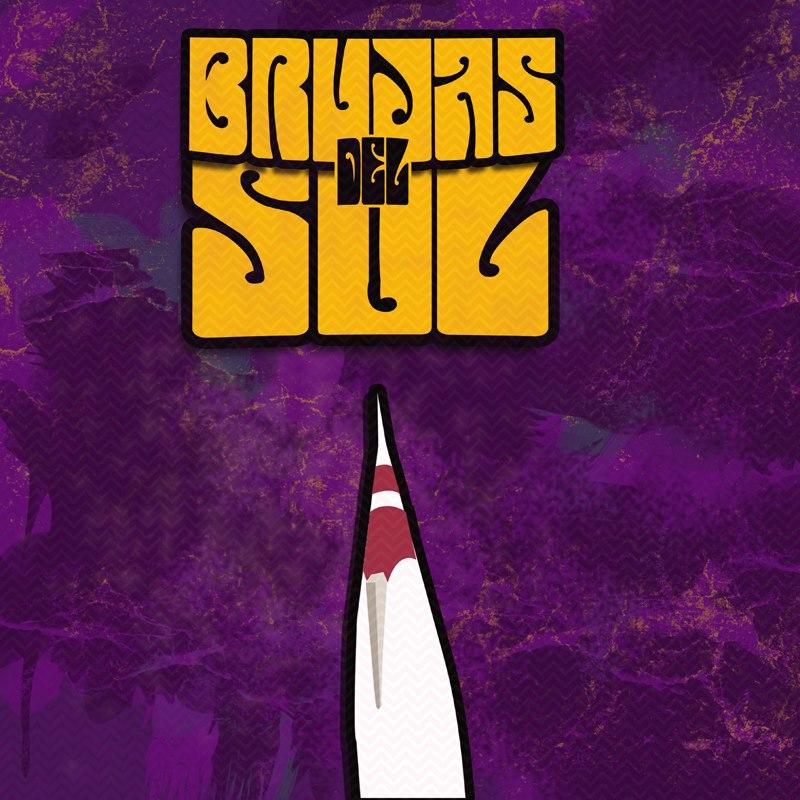 Columbus, Ohio based Brujas del Sol are the quartet of Adrian Zambrano on guitar and vocals, Derrick White on bass, Jason Green on drums, and Ryan Stivers on keyboards. According to the Devouter Records web site, the band formed in 2011 as a guitar/bass/drums trio and recorded three volumes of Moonliner EPs which they made available on Bandcamp (they’re still there), but re-recorded them for this LP with the addition of Stivers’ keyboards.
Columbus, Ohio based Brujas del Sol are the quartet of Adrian Zambrano on guitar and vocals, Derrick White on bass, Jason Green on drums, and Ryan Stivers on keyboards. According to the Devouter Records web site, the band formed in 2011 as a guitar/bass/drums trio and recorded three volumes of Moonliner EPs which they made available on Bandcamp (they’re still there), but re-recorded them for this LP with the addition of Stivers’ keyboards.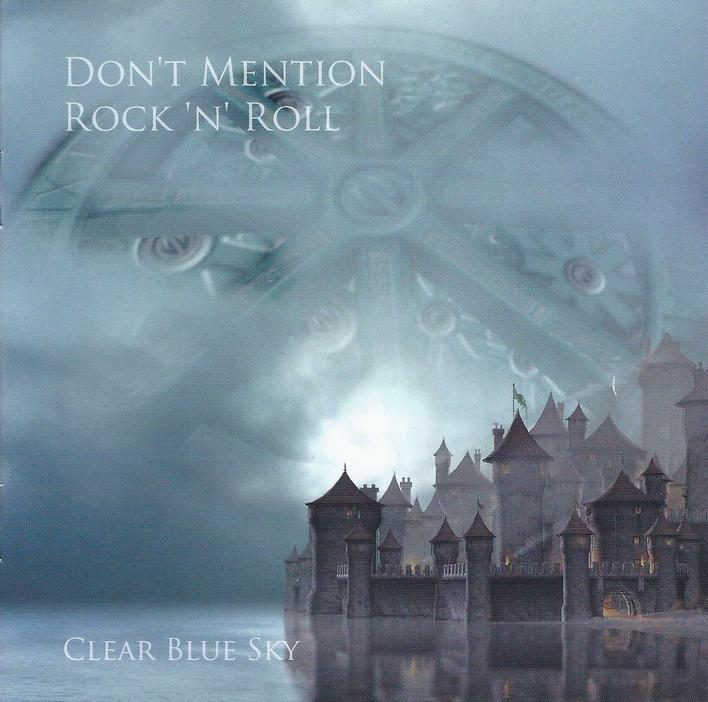 For those unfamiliar with the band, Clear Blue Sky released a couple albums on the Vertigo label in the early 70s, and have sporadically put out new albums ever since. Their last full set of new songs was Gateway To The Seventh Dimension, released in 2007, an album that drew on every aspect of what Clear Blue Sky can be about, from hard Blues rock, progressive rock, psychedelia and space rock; a really interesting convergence of genres.
For those unfamiliar with the band, Clear Blue Sky released a couple albums on the Vertigo label in the early 70s, and have sporadically put out new albums ever since. Their last full set of new songs was Gateway To The Seventh Dimension, released in 2007, an album that drew on every aspect of what Clear Blue Sky can be about, from hard Blues rock, progressive rock, psychedelia and space rock; a really interesting convergence of genres.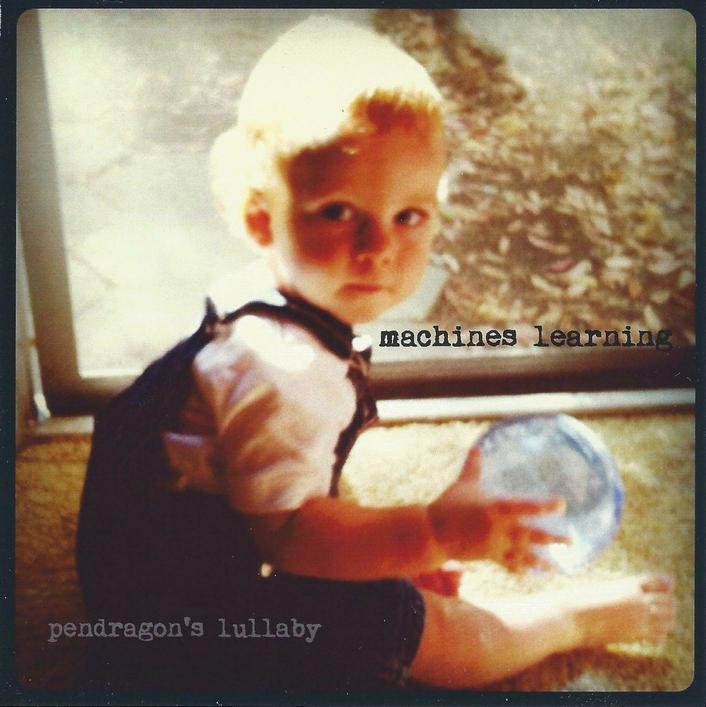 San Diego alt-rockers Machines Learning, comprised of guitarist/vocalist Paul Williams Balmer, bassist Bradley Botbyl and drummer Mario Quintero, have released a 26-minute EP’s worth of material recorded in a three month period at the start of 2012. Alternately noisy, droney and trippy, the album recalls some of the classic guitar-based rock that was coming from both sides of the Atlantic in the early ’90’s. For example, opening track Bulletproof Tiger practically screams My Bloody Valentine at you, with excellent droning and distorted waves of shoegaze guitar, over a militant 4/4 beat and across some elegantly wasted vocals. The briefest of pauses in the middle quickly gives way to a menacing wall of sound pushing the listener remorselessly into Punching The Rabbit. This opens with some very fuzzed out bass from Bradley Botbyl, bringing to mind Ash’s noisier moments, and some crytic lyrics; what the words mean is a definite second to how they sound. The somewhat more sparse Pendragon’s Lullaby recalls The Smashing Pumpkins’ Mellon Collie And The Infinite Sadness album that was playing at evey student party back in 1995. satAMcoffee opens with droning feedback and slower tempo, grinding you implacably down over its four minute length, while 010710 has a lighter touch with very melodic bass and melancholic lyrics to match. Closing track, This Destroyed Me, dispenses entirely with vocals, rocking on in woozy fashion for about five minutes with grinding guitars and an almost post-rock sound, that descends into a white noise coda. Fans of that era of classic “downer” rock should check out the raw guitar noises, droning feedback and powerful rhythmns contained within this excellent debut release.
San Diego alt-rockers Machines Learning, comprised of guitarist/vocalist Paul Williams Balmer, bassist Bradley Botbyl and drummer Mario Quintero, have released a 26-minute EP’s worth of material recorded in a three month period at the start of 2012. Alternately noisy, droney and trippy, the album recalls some of the classic guitar-based rock that was coming from both sides of the Atlantic in the early ’90’s. For example, opening track Bulletproof Tiger practically screams My Bloody Valentine at you, with excellent droning and distorted waves of shoegaze guitar, over a militant 4/4 beat and across some elegantly wasted vocals. The briefest of pauses in the middle quickly gives way to a menacing wall of sound pushing the listener remorselessly into Punching The Rabbit. This opens with some very fuzzed out bass from Bradley Botbyl, bringing to mind Ash’s noisier moments, and some crytic lyrics; what the words mean is a definite second to how they sound. The somewhat more sparse Pendragon’s Lullaby recalls The Smashing Pumpkins’ Mellon Collie And The Infinite Sadness album that was playing at evey student party back in 1995. satAMcoffee opens with droning feedback and slower tempo, grinding you implacably down over its four minute length, while 010710 has a lighter touch with very melodic bass and melancholic lyrics to match. Closing track, This Destroyed Me, dispenses entirely with vocals, rocking on in woozy fashion for about five minutes with grinding guitars and an almost post-rock sound, that descends into a white noise coda. Fans of that era of classic “downer” rock should check out the raw guitar noises, droning feedback and powerful rhythmns contained within this excellent debut release.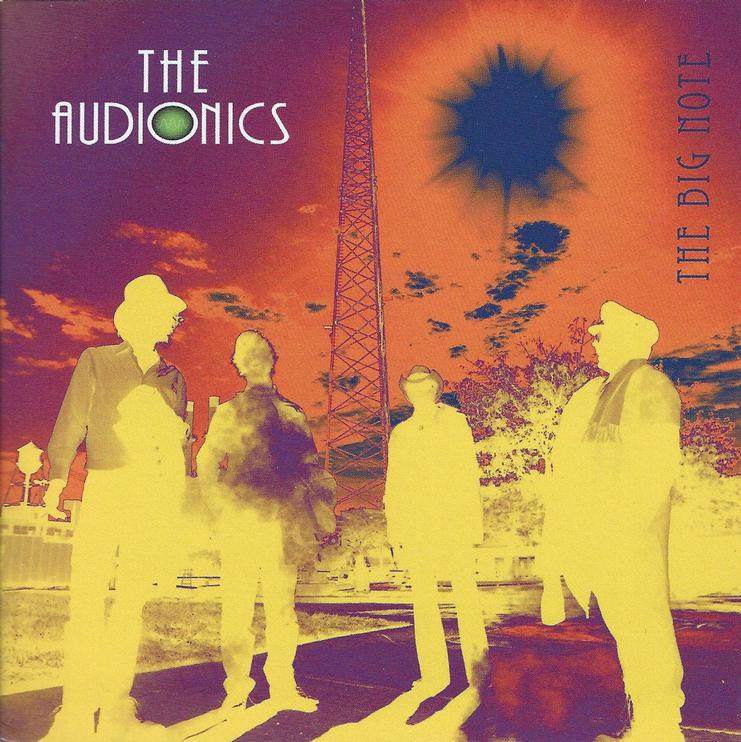 The Big Note is the debut release from Michigan based Audionics (which means “the science of audible electricity”). The band are the quartet of Leo Gillis II on vocals, Sheldon Santamaria on saxophone, Djeto Juncaj on guitar and santoor (an Indian hammered dulcimer), and Kerry Gluckman on drums and percussion. I’ll get Aural Innovations readers attention by mentioning that Gluckman was in THTX, though The Audionics are far and away from the space rock that THTX played.
The Big Note is the debut release from Michigan based Audionics (which means “the science of audible electricity”). The band are the quartet of Leo Gillis II on vocals, Sheldon Santamaria on saxophone, Djeto Juncaj on guitar and santoor (an Indian hammered dulcimer), and Kerry Gluckman on drums and percussion. I’ll get Aural Innovations readers attention by mentioning that Gluckman was in THTX, though The Audionics are far and away from the space rock that THTX played.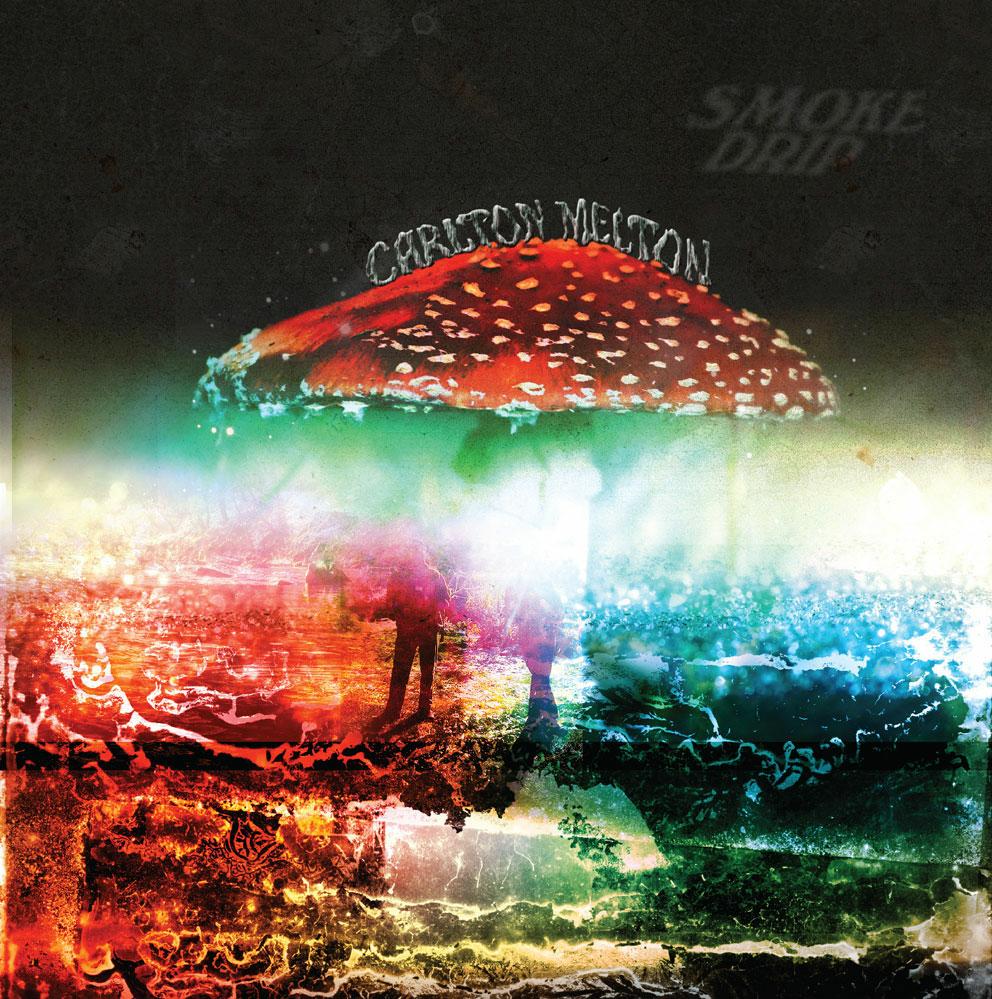 Carlton Melton – “Smoke Drip” 12″
Carlton Melton – “Smoke Drip” 12″ Carlton Melton – “Photos of Photos”
Carlton Melton – “Photos of Photos”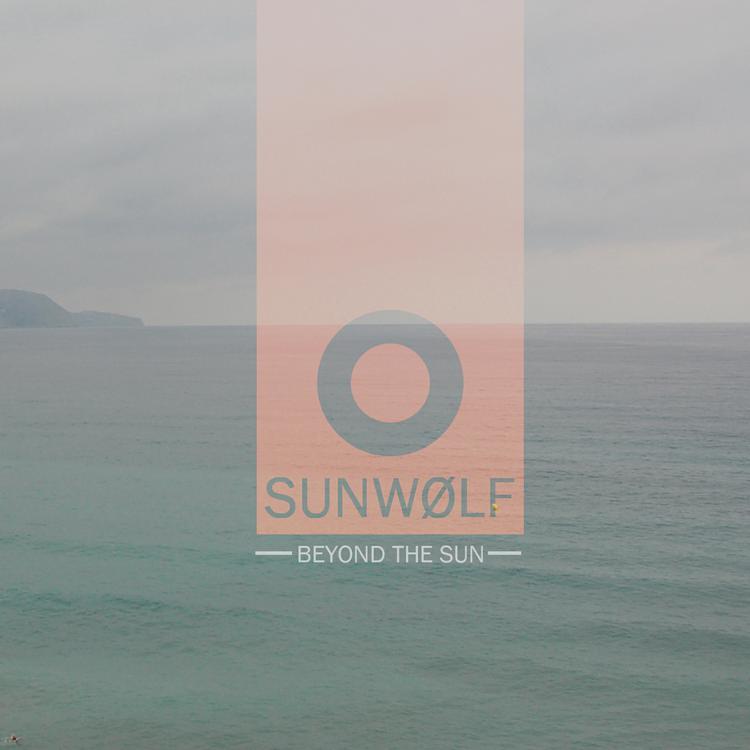 Sunwolf are a post rock band, of sorts, comprising a drummer and guitarist. The band hail from Leeds in West Yorkshire which has, in previous times, given us the brooding goth of The Sisters of Mercy, the uncompromisingly grinding funk of Gang of Four and those great bastions of unreconstructed lad culture; The Kaiser Chiefs. I say that Sunwolf are a post rock band of sorts because they also cite their music as being ambient, progressive and stoner. I would probably categorise their music as originating in the same camp as Neil Young’s Dead Man soundtrack; a special kind of selfless guitar music that worships and renounces rock and roll in a single sweeping gesture.
Sunwolf are a post rock band, of sorts, comprising a drummer and guitarist. The band hail from Leeds in West Yorkshire which has, in previous times, given us the brooding goth of The Sisters of Mercy, the uncompromisingly grinding funk of Gang of Four and those great bastions of unreconstructed lad culture; The Kaiser Chiefs. I say that Sunwolf are a post rock band of sorts because they also cite their music as being ambient, progressive and stoner. I would probably categorise their music as originating in the same camp as Neil Young’s Dead Man soundtrack; a special kind of selfless guitar music that worships and renounces rock and roll in a single sweeping gesture. Herd of Instinct’s 2011 debut was a fiery set that covered a range of styles, from complex instrumental progressive rock that recalled both Discipline and Red-era King Crimson, ambience and soundscapes, gothic prog and dark, doomy ragas. On the first album the band were the core trio of Mark Cook on Warr guitar, guitar, and fretless bass, Mike Davison on guitars, and Jason Spradlin on drums, plus a variety of guests on various tracks, including veteran drummers Jerry Marotta, Gavin Harrison, and Pat Mastelotto, and Djam Karet’s Gayle Ellett on guitar and Mellotron (both albums are released on Djam Karet’s Firepool label). The first thing that jumped out at me reading the credits for the band’s sophomore effort – Conjure – is that Gayle Ellett is now listed as a fourth member, playing Moog, Mellotron, Hammond organ, Rhodes and dilruba (which I think is something of a cross between a harp and sitar).
Herd of Instinct’s 2011 debut was a fiery set that covered a range of styles, from complex instrumental progressive rock that recalled both Discipline and Red-era King Crimson, ambience and soundscapes, gothic prog and dark, doomy ragas. On the first album the band were the core trio of Mark Cook on Warr guitar, guitar, and fretless bass, Mike Davison on guitars, and Jason Spradlin on drums, plus a variety of guests on various tracks, including veteran drummers Jerry Marotta, Gavin Harrison, and Pat Mastelotto, and Djam Karet’s Gayle Ellett on guitar and Mellotron (both albums are released on Djam Karet’s Firepool label). The first thing that jumped out at me reading the credits for the band’s sophomore effort – Conjure – is that Gayle Ellett is now listed as a fourth member, playing Moog, Mellotron, Hammond organ, Rhodes and dilruba (which I think is something of a cross between a harp and sitar).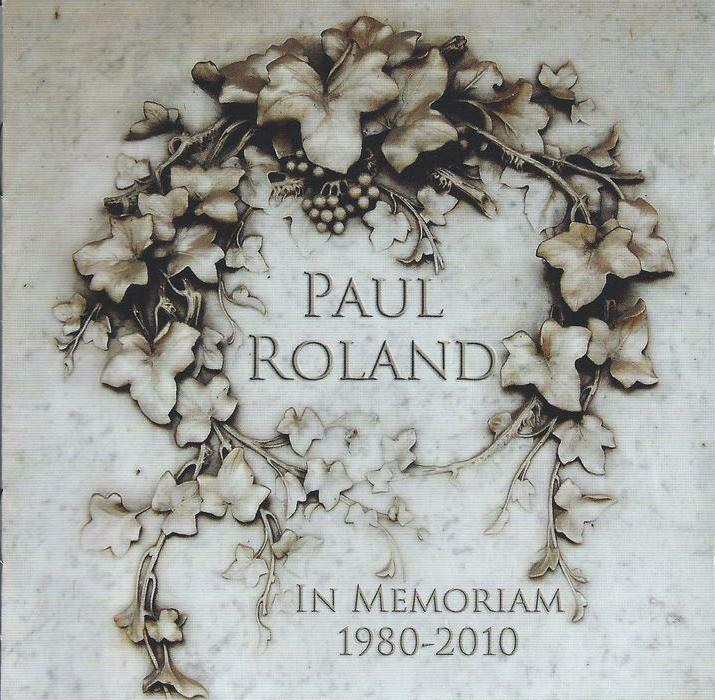 British singer, song-writer, musician and author Paul Roland has released over 15 albums since 1980, covering a range of Psychedelic-Pop, Gothic-Psych-Baroque, Gothic-Prog, Prog-Psych, Dark-Folk, and every imaginable cross-section of these styles. I’ve heard scatterings of Paul’s music over the years but the 2-CD compilation, In Memoriam: 1980-2010, is my first immersion into what his music is about.
British singer, song-writer, musician and author Paul Roland has released over 15 albums since 1980, covering a range of Psychedelic-Pop, Gothic-Psych-Baroque, Gothic-Prog, Prog-Psych, Dark-Folk, and every imaginable cross-section of these styles. I’ve heard scatterings of Paul’s music over the years but the 2-CD compilation, In Memoriam: 1980-2010, is my first immersion into what his music is about.